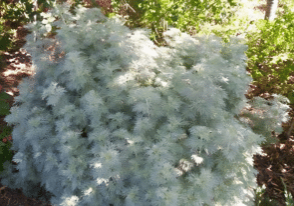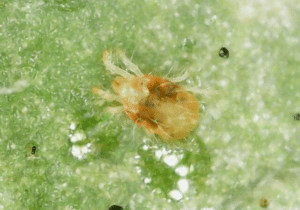
PLANTS AND FERTILIZER AND N-P-K, OH MY!

By Joe Golson
Joe received his Plant Sciences degree from Clemson University in 1977 and has worked in the landscape and irrigation industry for more than 35 years. In 1990, he joined W.P. Law, Inc and has served as a team leader, designer, and inside sales representative for the Horticultural Department. Joe has also served as an adjunct teacher at Midlands Technical College since 1999.
When it comes to purchasing fertilizers by our walk-in customers in counter sales, one cannot help but notice the uncertainty in their voices. They follow the fertilization schedules but seem lost and timid like Dorothy and her companions picking their way through the dark enchanted forest on the way to Oz.
The general public understands the need to apply fertilizer to the soil to obtain a healthy crop of fruits, vegetables, ornamentals or turf. What I’ve observed is that most consumers do not know how the product works to bring about these results or how to negotiate what may seem to be the complicated schedule that allows them to do so. Moreover, what do those three numbers mean on the bag? Since most fertilizer sold is for turf use, various grasses will be used as examples. Let us take this one small step at a time.
Fertilizer contains nutrients in the form of different mixtures of pulverized minerals with a nitrogen source. These items play a crucial role in how plants function and carry out various processes. The lack of essential nutrients, weaken the plant and can make them more susceptible to insects and disease. These chemicals allow the plant to carry out vital metabolic functions that ensure their health and survival. The elements in fertilizer are grouped into two categories- macro and micro-nutrients.
Macro-nutrients dominate the fertilizer mix because they are essential for plant growth and survival. These elements are sometimes listed on the bag by their elemental names N,P,and K. The three numbers on the label stand for the percentages or ratios of N, P,and K. That is, nitrogen, phosphorus and potassium. Micro-nutrients known as trace elements are less needed by the plant but still help carry out important metabolic processes. These trace elements are denoted as copper, sulfur, magnesium, iron, manganese and calcium to name a few.
What is the importance of the macronutrients in plant growth and development?
Nitrogen, the first component listed on the fertilizer label, is one of the key ingredients used in the production of chlorophyll. Its next use is in the development of stems, leaves, and shoots. Nitrogen is the most heavily used nutrient in grasses and because of this, it is found in various chemical forms in fertilizers. The release rate varies considerably depending on the nitrogen source used. Because of its volatile nature, nitrogen does not linger in the soil. Under favorable conditions, it is readily available to the plant but if applied too early in the season, before the grass breaks dormancy for instance, it returns to its gaseous form and dissipates into the air. Therefore, nitrogen levels are rarely tested in a soil sample.
Phosphorus, the second ingredient on the label, is the third most important nutrient in the plant. It promotes flower production, root development and is important in seed germination. Phosphorus can attach itself very tightly to the surface of soil particles. Because of this it does not leach readily and for some plants such as Centipede grass it can become toxic. For this reason, the second number in some fertilizer ratios used for turf grasses is tiny or zero.
Potassium, the third ingredient on the fertilizer label is the second most important nutrient. It is essential for regulating the transport of water in the plant cells, promotes the uptake of water and “hardens” the plant prior to stressful periods. Potassium does leach quickly from the soil and is used in vast amounts by individual plants; that yearly replacement is essential. That is why the last number of the ratio of macronutrients is sometimes quite high.
The ratio of N-P-K on a fertilizer label can say quite a bit about the product, but the thing that gets most consumers attention is the price of the product. Remembering that ground-up minerals comprise the bulk of a bag of fertilizer where does the high cost originate? Read the list of nitrogen carriers on the bag and also look for the statement,” slow release”. If you see chemicals such as urea or ammonia (these are the common ones), that is where the dollars are. The next thing to think about based on the cost is when to apply this product. If you are fertilizing a warm season grass, you should not use this product until the plant breaks dormancy, otherwise you will waste your money on nitrogen that will not be utilized by the plant. Consider this the next time you find yourself in a big-box store in early March. If you had a soil sample tested, and the results show that there is a nominal amount of phosphorus, but the potassium is low, hunt for the product that fits the situation. Soil test results are handy when selecting a fertilizer, too. If Centipede is your grass, the fertilizer recommendations may call for 1-3 pounds of total nitrogen for the season, no phosphorus and five pounds of total potassium for the season. Find the fertilizer that matches this ratio.
While I could go on for several pages, I see in my mind the editor with a finger poised above the “delete” key, so I had better stop. However, knowing what fertilizer is, the importance of the primary nutrients, their significance and what to look for when shopping, should give one the confidence to not wander the Yellow Brick Road forever.
Joe Golson CID
Horticulture Department, W.P. Law, Inc.
Please send you questions to "Ask the Editor" at www.homescapejournal.com/contact











